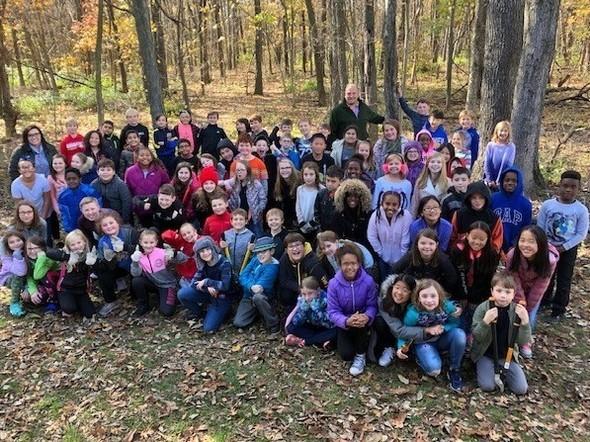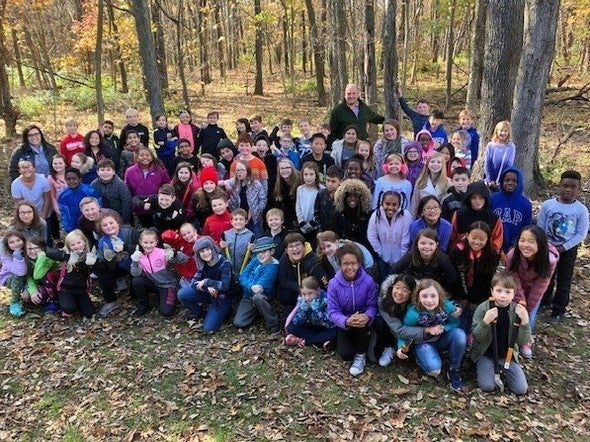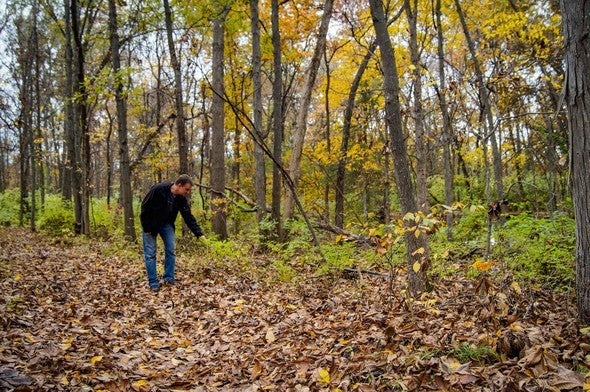
Xplor reconnects kids to nature and helps them find adventure in their own backyard. Free to residents of Missouri.


































Stay in Touch with MDC news, newsletters, events, and manage your subscription

Xplor reconnects kids to nature and helps them find adventure in their own backyard. Free to residents of Missouri.

A monthly publication about conservation in Missouri. Started in 1938, the printed magazine is free to residents of Missouri.




COLUMBIA, Mo. — In partnership with the Missouri Department of Conservation (MDC), Columbia Public Schools (CPS) has eliminated more than an estimated 2-million bush honeysuckle plants from the local landscape. By removing these non-native invasive plants, CPS has greatly contributed to ecological health in wooded areas of local parks and trails.
CPS Science Coordinator Mike Szydlowski turned his love for forests and passion for education into a service-learning opportunity for students with real, measurable benefits to both environmental quality and student learning.
“A couple of years ago, MDC sent out a publication around Thanksgiving that said that almost anything green at that time of year is honeysuckle,” Szydlowski said. “I was shocked at how every park and forest was covered with the plant. Since I love forests so much, I wanted to do something about keeping them as natural as possible.”
Originally from Asia, bush honeysuckles (Lonicera maackii and Lonicera x bella) are large, upright, spreading shrubs reaching up to 15-20 feet in height. Their opposite, simple leaves green up much earlier, and remain green later in the season than surrounding native vegetation.
These honeysuckles invade quickly and outcompete native plants. Because they leaf out so early in the season, they steal light from native plants that need a sunny forest floor in spring in order to flower, fruit, and gather energy for the next year. Birds and small animals eat the berries and deposit the seeds elsewhere, spreading this noxious weed. Learning to identify these aggressive invaders and killing them before they spread more seed is important to maintaining populations of native plants and the wildlife that depend on them.
CPS science classes, mostly in grades 4 and up, learn about honeysuckle in the classroom and then remove the plants from a nearby park within walking distance of their schools. Additionally, CPS science camps, middle school field trips, and other student group outings rotate through city parks and adopted trails to cut and dig these tough, weedy plants to help reverse their harmful impacts and engage students in hands-on learning outdoors.
"The amount work that Mike and his students have done in Columbia Parks properties is amazing,” said Columbia City Forester David Dittmer. “The changes to the landscape, both visually and ecologically are very impressive. Having Mike and CPS as a partner in our community's efforts to eradicate bush honeysuckle has been invaluable."
MDC applauds CPS students and staff for their accomplishment in removing more than 2-million bush honeysuckle plants, and for their ongoing commitment to outdoor education. Conservation makes Missouri a great place to hunt, fish, and watch wildlife, and, ultimately, conservation success stories in Missouri rely on citizens taking action at the local level.
“This project has made not only a big difference when it comes to forests, but also student engagement and learning,” Szydlowski said. “We have always taught about invasive species, but it wasn’t until students got out there and really discovered the problem and helped with a solution that they really started talking about it. Now we have kids asking to give up their recess to cut more.”
One of the best ways for students to learn about nature is to interact with the outdoors. That’s why MDC proudly partners with CPS and more than 1,600 schools across the state to implement the Discover Nature Schools (DNS) program. DNS inspires students in ways that other programs do not, such as improving students’ physical and mental health, increasing test scores, and decreasing student behavior problems.
Learn more about the DNS program at nature.mdc.mo.gov/discover-nature/teaching/discover-nature-schools, and learn more about controlling invasive bush honeysuckle at mdc.mo.gov/trees-plants/problem-plant-control/invasive-plants/bush-honeysuckles-control.